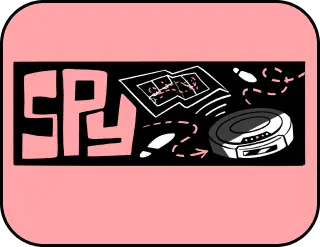Inventions that came out of love: from washing machines to Dyson
At all times, love has inspired poets, artists and musicians to create their best works, encouraged great warriors to perform heroic deeds and helped absolutely all people discover new, unknown emotions and feelings in themselves.
The editors of The Global Technology magazine reverently value love stories and endlessly honor all inventions, so we decided to get inspired by the romantic stories of the creation of famous inventions and find out which technical innovations owe their appearance to the great feeling.
A story of love, pure thoughts and pure things
That was in the 19th century. A certain William Blackstone from Indiana, before he was hit by Cupid’s arrow, was producing machines for processing corn and desperately dreamed that someday a pretty village woman would pass by and appreciate his quivering soul and irrepressible creative potential.
William Blackstone’s dreams were destined to come true, and after some time the girl he had dreamed about for so long appeared on the threshold of his workshop. The beauty turned out to be good at everyday life and a great love of cleanliness distinguished her. Thanks to this, after some time, William Blackstone presented his wife with a gift – a real washing machine designed by him.
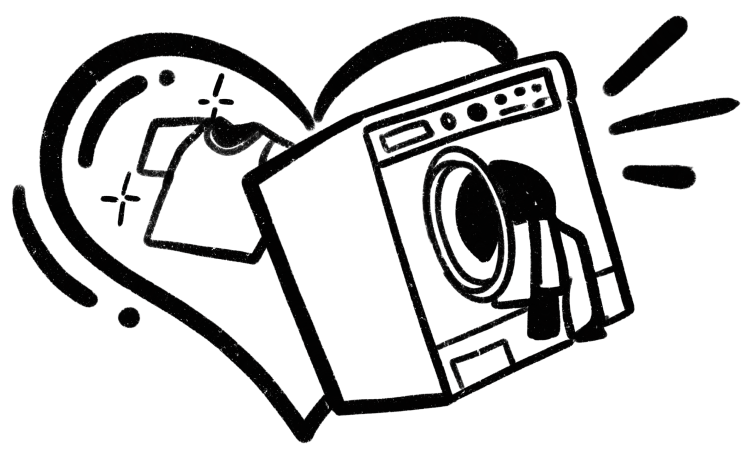
By the time of the creation of his brainchild with a wooden drum and a manual drive, which was activated by the muscular power of his beloved wife, several hundred patents for the invention of washing machines had been filed in the States, and indeed throughout the world, but Blackstone managed to establish mass production of his invention.
The loving couple moved to New York, where William Blackstone opened a washing machine factory that operated successfully even after Alva Fisher invented the electric washing machine. The simplest model of a washing machine, which used all the muscles of a woman’s hands, was in demand among buyers for another 50 years, because electric machines were expensive, resembled a bulky wardrobe in their appearance and were subject to electric shock, so did not go into mass production so quickly.
So, thanks to the pure and bright feeling, each of us has the opportunity to always walk in clean things. It was love that helped free William Blackstone’s wife, and indeed all women, from the monotonous rinsing of clothes in cold water and at the same time freed up several hours of women’s time in order to spend them with their loved ones.
A story of love, cornflakes and nymphomania
One day, Cupid wounded a cook with his arrow, who suffered from an unrequited love for food, and he invented an excellent dry breakfast. This is exactly how the history of the creation of corn flakes is portrayed, but it was not at all like that.

Cupid played a significant role in the unexpectedly fascinating story of the creation of corn flakes, but the main role still belongs to Dr. John Harvey Kellogg, quartermaster of the Battle Creek Sanitarium in Michigan. This institution was engaged in the improvement of patients in accordance with the religious principles of the Seventh-day Adventists, and Kellogg himself was an extremely colorful personality – he was not at all concerned about love in all its manifestations. On the contrary, he was worried about sexual abstinence. Kellogg believed that all forms of sexual activity were harmful and dangerous and reportedly spent his wedding night devising a plan to decisively crush masturbation.
In the noble cause of eradicating sex, Kellogg was guided by the idea that all diseases begin from the stomach, or more precisely, from the tongue: Kellogg believed that only a complete rejection of bright and anywhat tasty food can cure the terrible illnesses of desire and masturbation, which, according to him brought more troubles to humanity than plague, war and smallpox. Patients in the sanatorium of the future father of corn flakes were fed exclusively porridge with water, but people were not at all enthusiastic about the fact that they had to deny themselves pleasures and questioned Kellogg’s strict beliefs. In response to this, he began experimenting with cereals in order to somehow diversify his strict diet and not lose his loyal followers.
His brother, Will Keith Kellogg, joined Kellogg’s experiments. The brothers tried to develop a particularly light wheat flatbread that they believed would improve digestion. To do that, the brothers passed boiled wheat through special rollers for further baking – the result was something like a cracker. One day, Will forgot a bowl of boiled wheat on the table overnight; it was cold and pretty dry, but his brother, thrifty John, decided not to throw away the grain and tried to pass the wheat through the rollers. Instead of a single layer of dough, the result was individual flakes, which were pleasantly crunchy after baking. The Kellogg brothers patented their technology, replaced wheat with corn and began selling cereal to everyone who suffered from the arrows of the insidious Cupid – everyone who wanted to conquer their sexual desire.
It quickly became clear that the Kellogg market was not limited to Seventh-day Adventists. Orders began to come from all over the country, and the smell of corn in the Battle Creek Sanitarium began to be mingled with the palpable aroma of the love of profit.
John Harvey Kellogg was too preoccupied with moral issues to care about entrepreneurship, but his brother, a born businessman, Will, saw great potential in the new invention and was beside himself when his brother willingly showed off the equipment to anyone who wanted it.
The enterprising Will Keith, concerned about the sales of cereals, demanded that sugar be added to the recipe, but John Harvey was strongly against it: he saw the whole point of cereals in the desire-soothing properties, and adding sugar to corn flakes was equivalent to soaking cereals in Viagra.
It’s not hard to guess that sugar and money won in that love triangle. Will broke up with John after one of the resort’s guests, Charles Post, shamelessly stole the idea for corn flakes and quickly became rich. After founding his own company, Will Keith Kellogg immersed himself in promoting corn flakes, inventing ingenious advertising ploys like the acclaimed “Wink at the Salesman – Find out Why” campaign. The winker, of course, received special attention from the seller and a sample of sweet corn flakes.
Now, whenever Cupid flies over those eating corn flakes for breakfast, Cupid deliberately looks away and, instead of aiming for the heart, tries to hit the plate with a crunchy breakfast to prove that sometimes a great feeling begins with delicious food.
A story of love and the dimensions of love
One day, Cupid and Amur, angry with people because they stopped appreciating the feelings given to them from above, descended to earth to ask advice from physicists, who, as we know, have always been especially close to the Creator. Physicists at that moment had no time for the creative crisis of the gods, because they were exploring the properties of liquids and studying thermal expansion.
This situation is similar to a joke, however, several centuries later, one theoretical physicist decided to combine the physical properties of liquid and love. The fact is that the modest scientist had long sought the affection for the lady of his heart, but she could not believe in his sincere feelings. Then the scientist took several glass containers and connected them with a glass tube, into which he placed helium, and added a little water to the lower container. He came with his invention to the lady of his heart in the hope of getting the long-awaited “yes” and invited her to measure the strength of his feelings. He tightly squeezed the glass container with his palms; under the influence of heat, the helium began to expand and push out the water, due to which it began to pulsate in a steady stream into the upper container.

We don’t know how impressed the lady of the heart was with the experiment, but some time passed and a group of engineers, teaming up with a group of marketers, turned that impressive but bulky thermal fountain into a love meter. They took lightweight glass, decorated the top of the connecting tube with a heart, and painted the liquid itself red. Under the influence of heat, the liquid began to expand and naturally rise upward; the tighter the love seekers squeezed their palms, the higher the liquid rose.
Nowadays, some romantics, led by Cupid and Amur, also use the love meter to demonstrate the strength of their intentions, not paying attention to the fact that physicists laugh at them, who know that a great feeling does not need to be measured.
A story of love and meat
In the mid-19th century, an Austrian carpenter worked on creating a typewriter. His name was Peter Mitterhofer. Day and night he worked on his invention until he showed the world the first typewriter – the device had 30 buttons and could only print in capital letters. Peter Mitterhofer decided not to stop and improved his invention, so a second, improved model of a typewriter was born, and after it a third appeared, which, in addition to wooden parts, also contained metal parts. For those inventions, Peter Mitterhofer received the Imperial Prize from Franz Joseph I and gained worldwide fame.
What does love have to do with it?
The fact is that in order to test the operation of the typewriter mechanisms, Peter Mitterhofer typed love letters on it for the girl of his dreams. The beautiful words written on paper by the outlandish device impressed the young lady so much that she, without hesitation, agreed to tie the knot with the future genius.
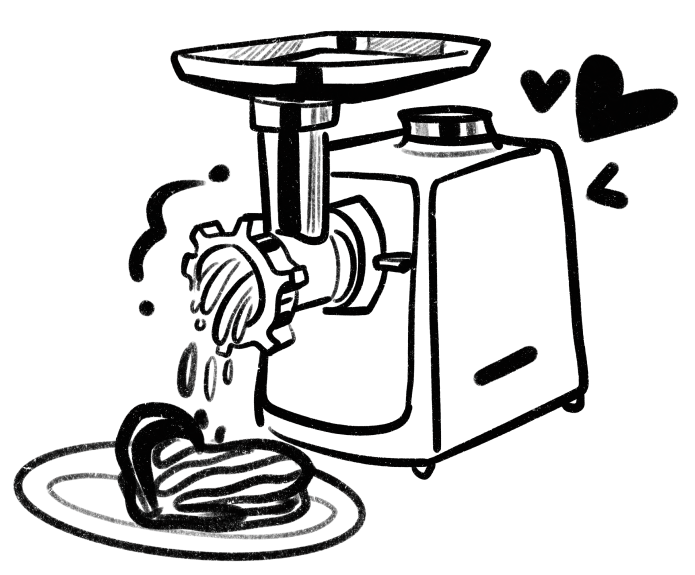
During his family life, Peter Mitterhofer, passing by the kitchen, saw his wife wielding a dangerous wide curved crescent knife with two handles on the sides, trying to turn a large piece of meat into mince. The wife swung the knife from side to side, but the meat did not give in to the fragile female hands.
Then Peter Mitterhofer decided to make the work of his beloved woman easier and invented a meat grinder for her. Actually, people had already known a rather primitive design of a meat grinder before Mitterhofer, but the product of the Austrian genius was better thought out.
The basis of the meat grinder, which was invented by Peter Mitterhofer, was the same large curved knives. They synchronously lowered themselves onto a wide wooden block with meat, which gradually shifted along the circumference by several degrees, so that the blades of the knives each time fell on a new section of meat, gradually turning it into minced meat. At first the mechanism was powered by a horse, but later it began to work on electric traction. With its help, in half an hour it was possible to obtain more than 20 kg of selected minced meat. The disadvantage of such meat grinders was their bulkiness, so they were used in mass production.
The name of the outstanding designer is firmly entrenched in the history of printing: in 1993, a museum of typewriters was opened in the homeland of the great inventor in Parcines, and a bronze bust of Peter Mitterhofer was installed in its square, undeservedly overlooking the invention that appeared thanks to sincere emotions. But we remember about meat and love. And you don’t forget it either.
A story of love and allergic dust
For more than 100 years, the Hoover brand has been one of the leaders in the European market in the production of household appliances: washing machines, microwave ovens, cleaning products, refrigerators, but the company’s flagship has always been and remains the vacuum cleaner.
It was like this: a certain Murray Spangler, a doorman from Canton, a small town in Ohio, suffered from asthma and saw the solution to this problem in keeping his nose never in contact with dust. But all the devices that were called “vacuum cleaners” were so bulky that they could not be used in everyday life; in addition, they ran on steam and gasoline. Then Murray Spangler decided to assemble the first home vacuum cleaner, for which he used improvised means: a soap dish, a fan that served as a motor and air blower, a silk pillowcase for collecting dust and a broom handle.
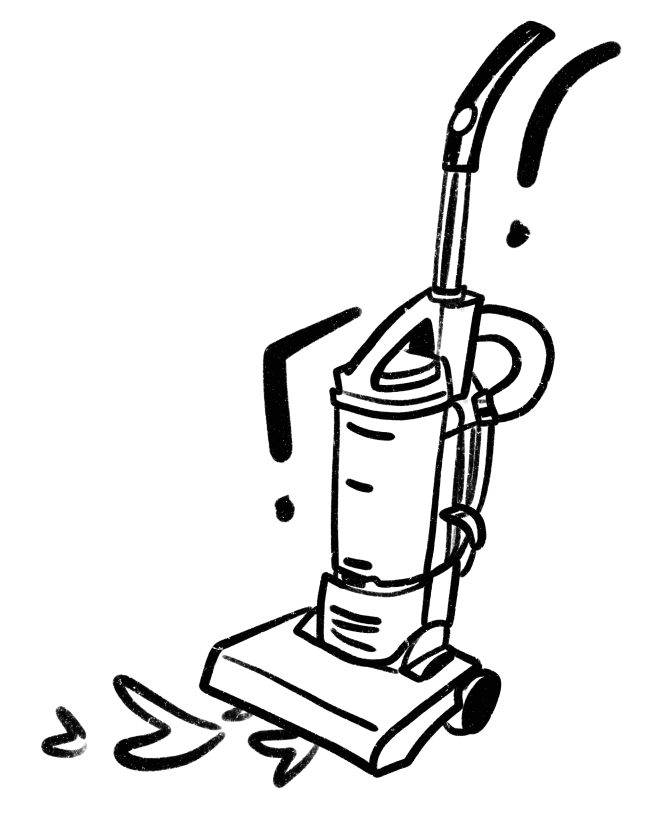
Where is Cupid in this story?
The fact is that Murray decided to get an opinion about his invention from his friend (according to other sources, a relative) Susan Hoover, who was married to a local businessman who produced and sold leather goods in Canton. For several days she was meticulously testing the prototype of the future vacuum cleaner at home and was convinced that it worked and collected dust well. Susan shared this with the inventor, but Murray did not have the money to mass produce or promote the invention. Then, inspired Susan persuaded her husband to buy the patent from Murray, assuring him that the new invention would conquer the whole world.
William H. Hoover could not refuse his wife, so in 1908 the Hoover company was founded.
William Hoover had ambitious plans; he wanted to sell vacuum cleaners throughout the country. He published an ad in the Saturday Evening Post, inviting everyone to try the vacuum cleaner completely for free for ten days. Hoover soon had a wide range of customers and a strong network of reputable stores that promoted his products.
Of course, a lot has changed today, and more than one team of engineers and designers are working on creating new models of Hoover vacuum cleaners, creating bright, progressive and functional products. However, the company itself appeared thanks to endless trust, keen entrepreneurial instincts and, of course, love. William H. Hoover himself suggests remembering this when fighting even the most severe blockages.
A story of love and cuisine
Her name was Josephine Cochrane and she was in love… Perhaps it was with this description that the American inventor and one of the most successful women in the world should have gone down in history. However, this woman’s serious disposition was able to change the flight path of Cupid’s arrows and shoot them into the hearts of people all over the world.
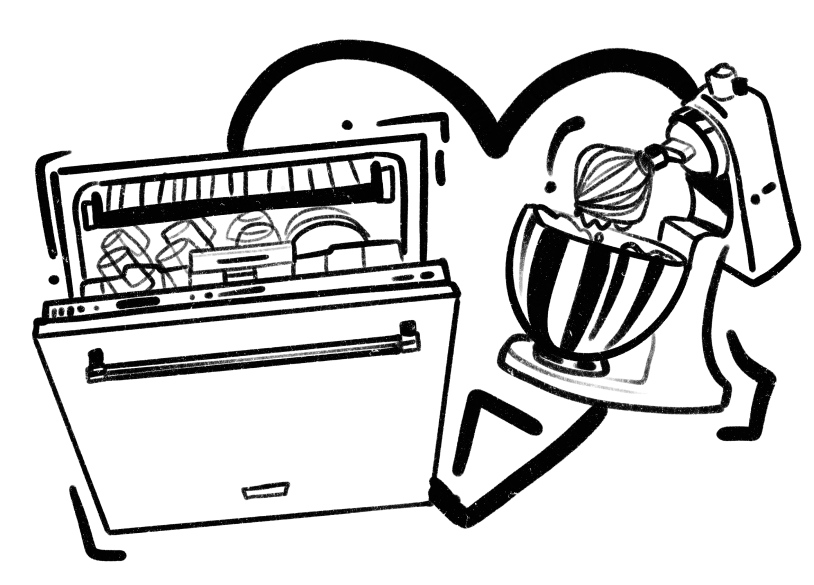
It all started when, in October 1958, an ordinary girl from Ohio married a prosperous dry goods merchant and politician. The young family quickly became socialites and purchased a large mansion, where they began hosting parties and dinners using heirloom china. Everything would be fine, but young Josephine was very upset by the amount of family dishes that the servants broke every time when washing. Then, standing in the kitchen after another reception, counting with her eyes the fragments of another broken set on the floor, the future owner of the world brand said: “If nobody else is going to invent a dishwashing machine, I’ll do it myself!” and started inventing.
To assemble the dishwasher, Josephine Cochrane first measured the dishes to build wire compartments for them, each specifically designed to fit plates, cups or saucers. The compartments were placed inside a wheel, which lay inside a copper cauldron. The motor turned the wheel while hot soapy water splashed from the bottom of the pot and fell onto the dishes. Her dishwasher was the first to use water pressure instead of waste gas treatment units to wash dishes inside the machine.
Josephine Cochrane developed her creation in a barn behind the house, and a talented mechanic who desperately believed in Cupid, George Butters, helped her realize the whole plan.
Cochrane demonstrated her invention at the 1893 World’s Columbian Exposition in Chicago and received the highest award for “best mechanical design, durability and adaptability to its work.” Word quickly spread about the wonderful machine that washed dishes with love, and Cochrane soon began receiving orders for her dishwasher from restaurants and hotels in Illinois.
A little later, at the beginning of the twentieth century, an engineer from a small American town, Herbert Johnson, who had suffered enough from love dramas, saw a baker kneading bread dough with a large iron spoon and decided that he had to find a more perfect and easier way to do this grueling work. Thus, Herbert Johnson, thanks to his unique engineering abilities, invented the world’s first industrial mixer, which all ships of the US Navy were equipped with.
A little more time passed and an unknown company decided to take as a basis the drawings of the mixer invented by Herbert Johnson in order to turn the industrial mixer into a mixer for all housewives who love to cook. So, in 1919, the first project to create a home mixer was launched. The unknown company, which didn’t even have a name, donated all the mixers that had just come off the assembly line to the wives of the factory employees, who, naturally, were in love. One of the grateful wives was so delighted with the invention that she joyfully uttered the phrase: “I don’t care what you call it, but this is the best kitchen assistant!”
Thus, the young company that was just a “brand without a name” found its name – KitchenAid.
At the same time, Josephine Cochrane, desperately looking for a company to produce her dishwashers, the demand for which was increasing every minute, again found herself at the Chicago exhibition, where the young company KitchenAid also happened to be, which had launched miracle mixers on the market. The talented female engineer and the ambitious company with huge plans became partners.
Rumor has it that during the signing of the agreement between the parties, endless love was somewhere in the air.
A story of love and warm air
“If there was no love in inventions, they would be incredibly boring.”
This absolute truth was proven in practice by James Dyson, a British inventor and entrepreneur. At his first job, James created a fast cargo ship capable of mooring to an unequipped seashore. His next invention was a wheelbarrow with a ball instead of a wheel – this made it possible to use it even on loose soil and it would not fall through.
What else could a loving genius who graduated from the Royal College of Art, where he studied industrial design, invent?
The desire to make functional things that would fully fulfill their role led the still single inventor to another key decision. In 1979, James Dyson noticed that the Hoover Junior, the most powerful vacuum cleaner at that time, practically stopped working due to the bag becoming clogged with dust. Then Dyson replaced the dust bag with a funnel made of cardboard and the garbage began to collect in a spiral, not accumulating in one place: moving as if inside a cyclone, the garbage fell into the dust collector. By the way, that was the first vacuum cleaner without a dust bag.
From that point on, Dyson immersed himself in improving his technology and scaling the idea. James Dyson got into debt, mortgaged his house, but the negotiations with large corporations to buy his idea ended in refusals.
Only in 1986, the Japanese company Apex Inc. launched the G-Force vacuum cleaner, designed by James Dyson. The new product quickly became popular, and with money from sales of G-Force, the inventor founded the Dyson company: a research center and factory. After a year and a half, Dyson DC01 became the best seller.
And then love came into the life of the tireless inventor.
James Dyson loved to talk to his wife Deirdre while she was getting ready and blow-drying her hair, but the noise from the appliance made it difficult to communicate properly. Then James decided it would be a good idea to make the hair dryer silent.
Testing was carried out on cats, but the animals were not harmed during testing: the manufacturer said that. The thing is simply that in such an unusual way, Dyson wanted to demonstrate a minimal noise level that didn’t even scare pets. That is why, at the presentation in 2016, the first user of a Dyson hair dryer was a cat.
By the way, the signature color of the hair dryer became fuchsia – the favorite color of Dyson’s wife, and the hair dryer, thanks to its characteristics, gained enormous popularity. The hair dryer is used in luxury spa centers and elite beauty salons, thanks to which Dyson hair dryers have become associated with high status and have become an unconditional symbol of financial viability.
As a result of undeniable love, such a simple product as a silent multifunctional hair dryer was born, and as a result of phenomenal marketing promotion, a brilliant result was born – everyone wants a Dyson.

Scientists have decoded the human genome. We’ve decoded the genome of interest. Only pure science and facts.
Thank you!


